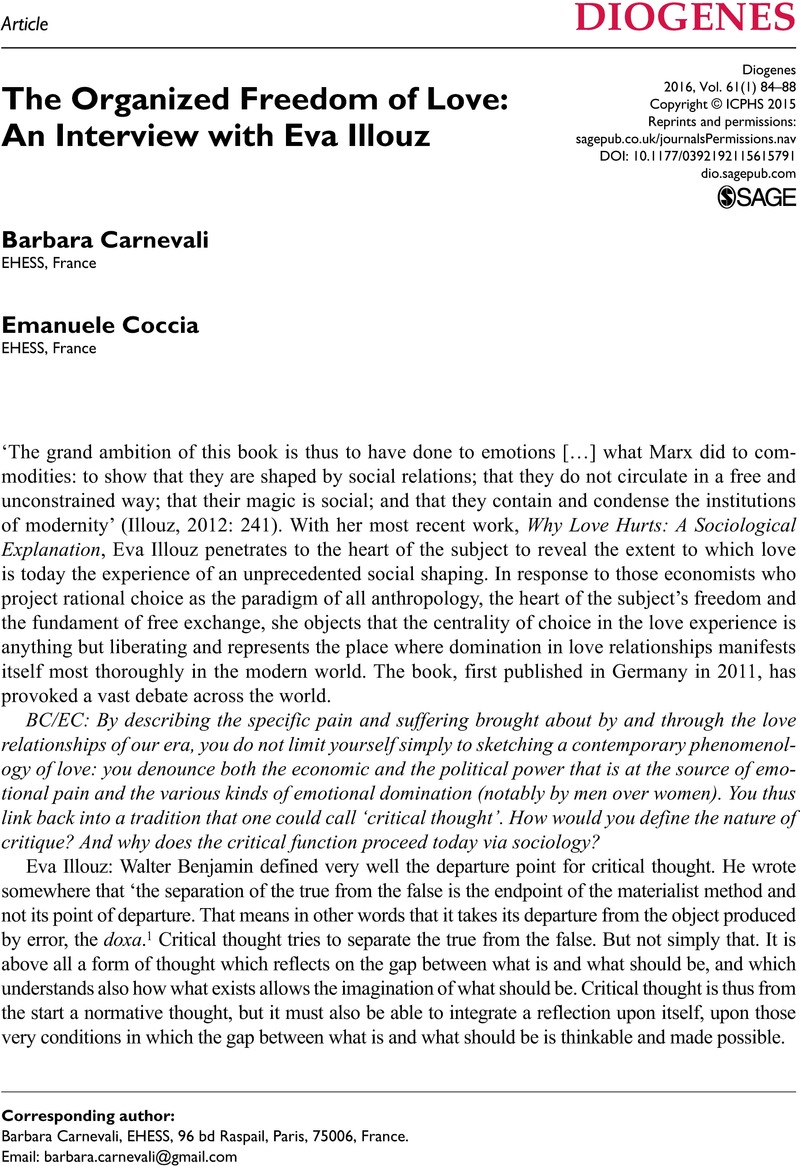No CrossRef data available.
Article contents
The Organized Freedom of Love: An Interview with Eva Illouz
Published online by Cambridge University Press: 01 January 2024
Abstract
An abstract is not available for this content so a preview has been provided. Please use the Get access link above for information on how to access this content.

- Type
- Articles
- Information
- Copyright
- Copyright © ICPHS 2015
References
Benjamin, W (1974) Gesammelte Schriften. Band I: Abhandlungen, 3. Teil. Frankfurt am Main: Suhrkamp.Google Scholar
Carnevali, B (2010) Mimésis littéraire et connaissance morale : la tradition de l’éthopée, Annales. Histoire, Sciences Sociales, 2: 291–322.CrossRefGoogle Scholar
Illouz, E (1997) Consuming the Romantic Utopia: Love and the Cultural Contradictions of Capitalism. Berkeley: University of California Press.CrossRefGoogle Scholar
Illouz, E (2006) Gefühle in Zeiten des Kapitalismus. Adorno-Vorlesungen 2004. Frankfurt am Main: Suhrkamp.Google Scholar
Illouz, E (2013) Die neue Liebesordnung. Frauen, Männer und Shades of Grey. Frankfurt am Main: Suhrkamp.Google Scholar
Shorter, E (1975) The Making of the Modern Family. New York: Basic Books/London: Collins.Google Scholar
Shorter, E (1976) Women's Work: What Difference Did Capitalism Make?, Theory and Society, 3: 513–527.CrossRefGoogle Scholar




